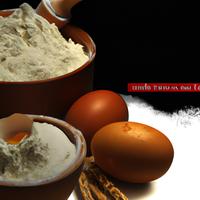
1 serving (30 grams) contains 100 calories, 3.0 grams of protein, 0.5 grams of fat, and 21.0 grams of carbohydrates.

Log this food in SnapCalorie

Nutrition Information
Calories |
400 | ||
|---|---|---|---|
% Daily Value* |
|||
| Total Fat | 2 g | 2% | |
| Saturated Fat | 0 g | 0% | |
| Polyunsaturated Fat | 0 g | ||
| Cholesterol | 0 mg | 0% | |
| Sodium | 0 mg | 0% | |
| Total Carbohydrates | 84 g | 30% | |
| Dietary Fiber | 12 g | 42% | |
| Sugars | 0 g | ||
| protein | 12 g | 24% | |
| Vitamin D | 0 mcg | 0% | |
| Calcium | 40 mg | 3% | |
| Iron | 4 mg | 22% | |
| Potassium | 400 mg | 8% | |
* Percent Daily Values are based on a 2,000 calorie diet. Your daily values may be higher or lower depending on your calorie needs.
Food Attributes
Source of Calories
About Whole wheat pastry flour or white whole wheat flour
Whole wheat pastry flour and white whole wheat flour are versatile, whole-grain options used in baking. Whole wheat pastry flour is made from soft winter wheat, offering a finer texture ideal for delicate baked goods like cookies, muffins, and cakes. White whole wheat flour, derived from hard white spring wheat, provides similar nutritional benefits but with a milder flavor, making it suitable for lighter breads and pastries. Both flours retain the wheat kernel's bran, germ, and endosperm, delivering fiber, B vitamins, iron, and antioxidants. They are popular in cuisines emphasizing health-conscious choices and work well as substitutes for all-purpose flour in recipes. While their nutrient content supports heart health, digestion, and sustained energy, watch for portion sizes in baked goods high in sugar or fat. These flours help elevate the nutritional profile of traditional comfort foods without sacrificing taste or texture.



